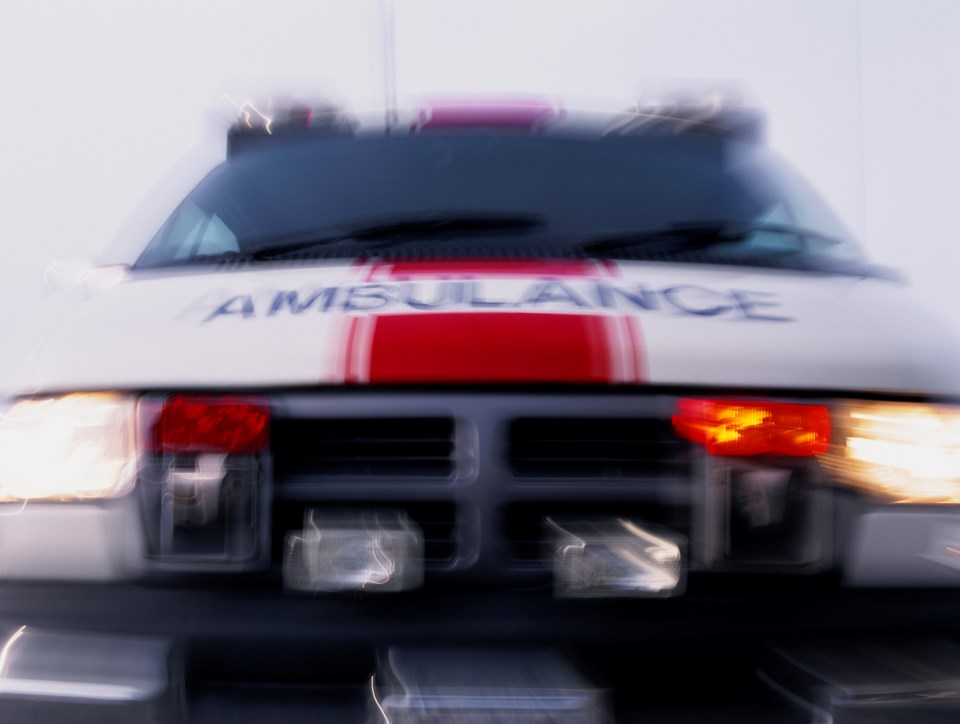While behind the wheel, do you ever startle or freeze when you suddenly see an ambulance's flashing red lights in your rear-view mirror or hear the blaring of a siren behind you?
If so, you are not alone. For lots of drivers, it fortunately isn't a daily occurrence so when it happens, it can be a shock.
Therefore, BC Emergency Health Services (BCEHS) is reminding drivers to slow down, move over and yield to ambulances and other response vehicles that display lights and sirens.
"A lot of it is people being scared or startled when they see an ambulance or any emergency vehicle approaching, and they just stop where they are and that can be dangerous," said public information officer Jasprit Khandal, who previously worked as a paramedic in Lions Bay.
Stopping without pulling over is dangerous because ambulances are super heavy, with lots of equipment, and their braking time and distances are longer than a regular vehicle.
“It's stressful for everybody involved. It can delay our response to patients. It can put paramedics in a dangerous position having to abruptly stop behind somebody who doesn't pull over immediately,” she added.
Also, don't stop in an intersection when a first response vehicle approaches.
Put your signal on, pass through the intersection and then pull over to the right.
"Stopping in the middle of an intersection can be dangerous when cars are approaching from other directions; you can put yourself right in the middle of the ambulance's way," Khandal said.
It is always important to use your signals to indicate what you are doing to the emergency vehicles.
The bottom line is it is the law in B.C. to give emergency vehicles displaying flashing lights and sirens the right‑of‑way. All traffic moving in both directions must pull over and stop.
Fellow public information officer Brian Twaites, who was previously a paramedic in Whistler for a time, and worked in Vancouver for 37 years, said there is no time or area that is better or worse, for first responders navigating traffic.
"It doesn't matter what day of the week it is, and unfortunately, it does happen on almost every single call that we're on when we've activated lights and sirens that we do run into these difficulties," he said.
Highway driving
If you're on a divided highway — there's a median — drivers need to pull over to the closest curb.
"If there's a divider, like a median, that could be to the left or to the right, to allow access," Twaites said.
"We're talking about the Sea to Sky [Highway] specifically, … if there is an incident on the highway, and traffic comes to a standstill, if everybody would pull their car to the left curb or the right curb, it would provide an access lane right down the middle for all the emergency vehicles to be able to get to the scene quicker and safer."
When emergency vehicles have passed, be sure to double-check that more aren't coming, Khandal said.
"Because sometimes we travel in groups. There might be a second ambulance attending the scene — that could be a fire truck, that could be police cars. So don't just assume because an ambulance has gone by [that] you're clear to pull back [out]. Just use your senses to look and listen."
Other dos and don'ts
Twaites said folks should keep the noise in their vehicle to a level that allows them to hear sirens.
If the weather allows, crack your window, he suggested, so you can hear what is coming.
"Cars are so soundproof nowadays that sometimes people don't hear an emergency vehicle until it's right upon them," he said. "So I would like to suggest to people to be very, very aware of your surroundings while you're driving. Use your mirrors on a regular basis because you may see an ambulance or police vehicle, or a fire vehicle. It may be a couple of blocks behind you and you see it in your mirrors long before you would hear it, so that way, you're aware that they're coming."
How fast can ambulances go?
Khandal said ambulances can technically travel 25 kilometres over the posted speed limit, but speed always depends on road conditions.
"We just drive at the safest speed that we can to get to a patient in the safest, quickest way possible. So it can vary," she said.
How do they decide who drives?
According to Khandal, paramedic shifts typically determine who drives.
"We work four shifts — two day shifts, two night shifts, and you will usually take turns with your partner driving or attending," she said.
An attending is the paramedic who would be in the back with the patient.
If one partner is not feeling up to driving for whatever reason, the pair can switch within a shift, Khandal added.
Find more safe driving tips through ICBC.




